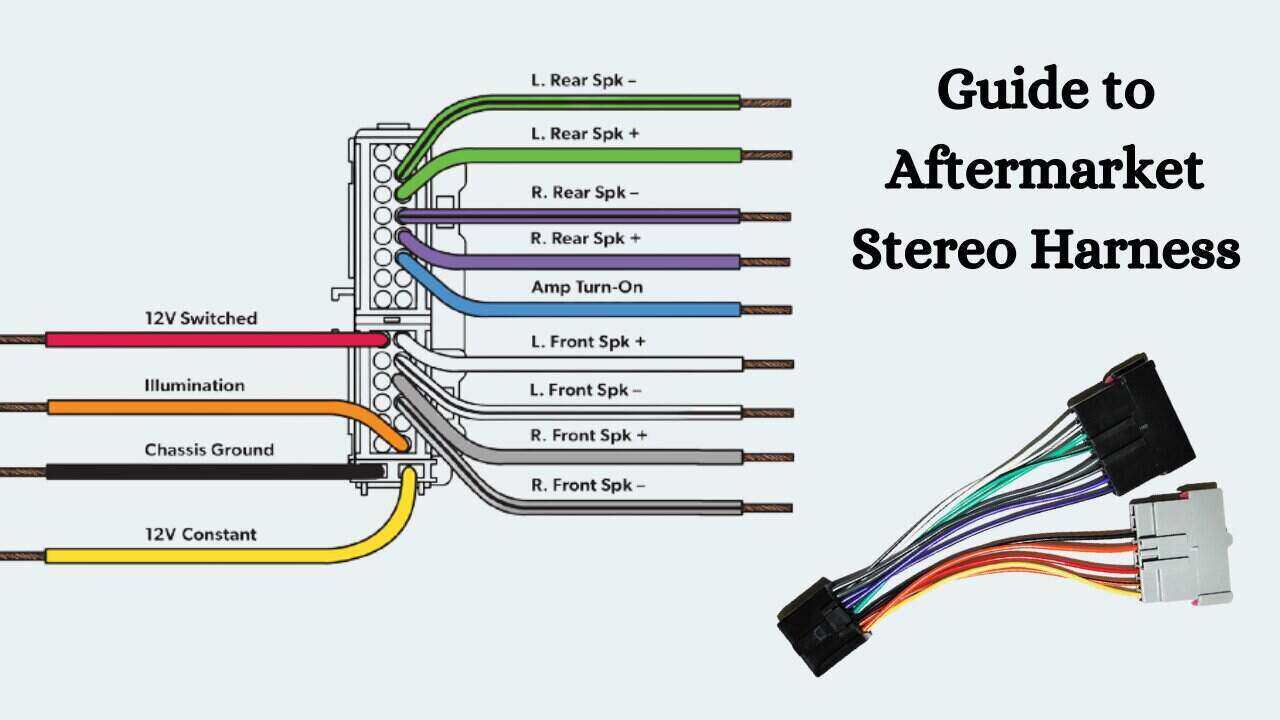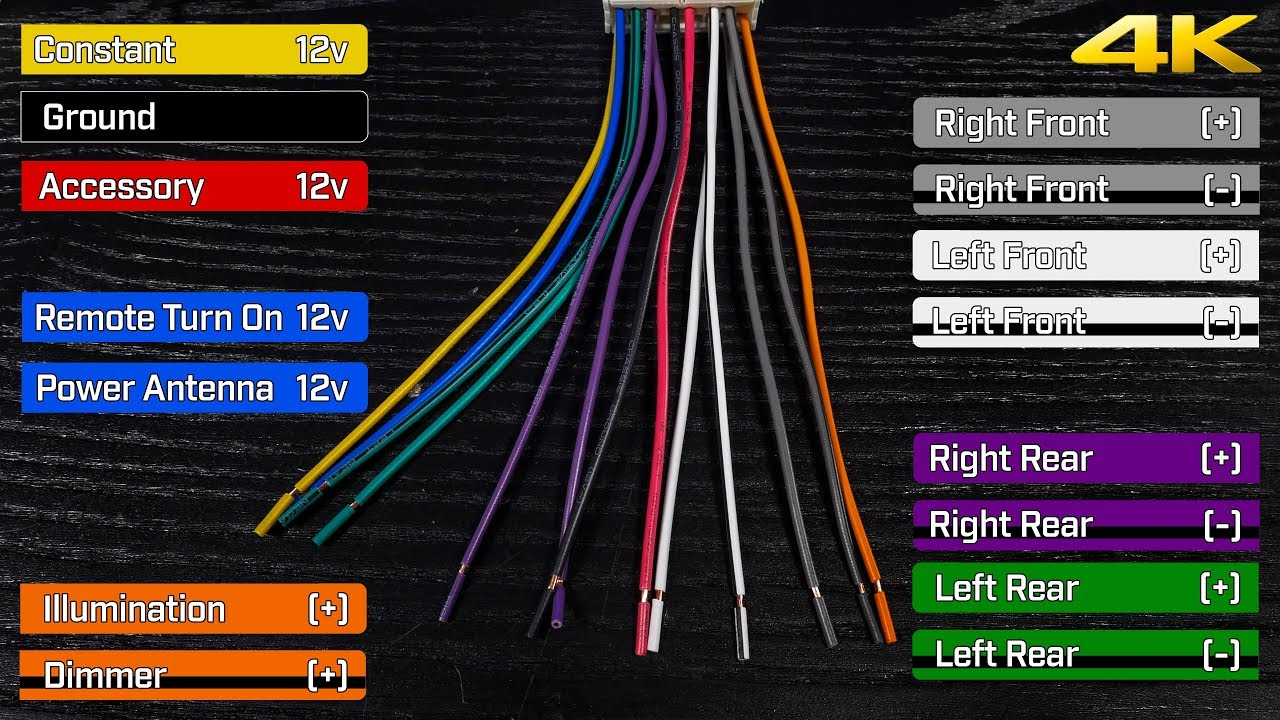Decoding the Matrix: Your Car Stereo Wiring Harness

Ever stared at a tangle of wires behind your car's dashboard and felt a surge of apprehension? Upgrading your car stereo can be exciting, but the prospect of grappling with the wiring can be daunting. The key to a smooth installation lies in understanding the language of your car's electrical system: the aftermarket radio wiring harness color code.
This cryptic collection of colored wires is essentially a translator between your new stereo and your car's existing electrical system. Each wire color represents a specific function, from powering the speakers to illuminating the display. Without a grasp of this code, you risk a frustrating installation process, potential damage to your stereo, or even electrical malfunctions in your vehicle.
This guide aims to demystify the world of car stereo wiring. We'll explore the purpose of an aftermarket wiring harness, decipher the common color codes, and equip you with the knowledge to confidently install your new audio system. This will involve discussing the nuances of wiring harnesses, including variations between car manufacturers and specific models.
The history of car audio wiring has evolved alongside car audio technology itself. Early car radios were simpler affairs, requiring fewer connections and less complex wiring. As car stereo systems became more sophisticated, incorporating features like amplifiers, subwoofers, and steering wheel controls, the need for standardized wiring harnesses became apparent. Aftermarket harnesses emerged as a solution to simplify the installation process, eliminating the need to splice into the car's original wiring.
The importance of using a proper wiring harness cannot be overstated. It protects your car's electrical system from damage, ensures the correct functionality of your new stereo, and simplifies future upgrades or repairs. One of the main issues related to wiring harnesses is the potential for incompatibility between the harness and the car or stereo. Always ensure you choose a harness that is specifically designed for your car's make, model, and year, as well as your new stereo's specifications.
A wiring harness is essentially a bundle of wires, each with a specific function, encased in a protective sheath. These wires are terminated with connectors that plug directly into your car's existing wiring and your new stereo. A simple example is the constant 12V power wire, typically yellow, which provides continuous power to the stereo's memory, allowing it to retain its settings. The red wire, often labeled "ACC," supplies switched 12V power, meaning it only provides power when the car's ignition is turned on.
One benefit of using a wiring harness is avoiding the need to cut or splice into your car's original wiring. This preserves the integrity of the factory wiring and makes it easier to revert to the original stereo if needed. Another advantage is simplified troubleshooting. If a problem arises, it's easier to identify and fix the issue with a dedicated harness rather than a tangle of spliced wires.
Before you begin installation, gather your tools: wire strippers, crimpers, electrical tape, and a wiring diagram specific to your car and stereo. Identify the corresponding wires on the harness and your stereo, matching them by color and function. Carefully connect the wires, ensuring secure connections, and test the stereo before fully reassembling the dashboard.
Advantages and Disadvantages of Aftermarket Wiring Harnesses
| Advantages | Disadvantages |
|---|---|
| Simplified Installation | Potential Incompatibility |
| Protects Factory Wiring | Cost |
| Easier Troubleshooting |
Best Practices: 1. Always double-check compatibility. 2. Use quality crimp connectors. 3. Securely insulate all connections. 4. Consult a wiring diagram. 5. Test before final assembly.
FAQs: What if my car's wiring colors don't match the harness? How do I identify speaker wires? What if my stereo doesn't power on? What if my speakers don't work? What if my antenna doesn't work? What is a data interface connector? Can I install a wiring harness myself? Where can I find a wiring diagram for my car?
Tips and Tricks: Use a multimeter to verify wire functions. Label wires for easy identification. Take photos of the original wiring before disconnecting.
In conclusion, understanding the intricacies of your aftermarket radio wiring harness color code is crucial for a successful car stereo upgrade. By taking the time to familiarize yourself with the wiring and following best practices, you can avoid frustration and ensure a seamless installation. The benefits of using a harness are numerous, from protecting your car's electrical system to simplifying troubleshooting. Investing in a compatible harness and carefully connecting the wires will transform a potentially daunting task into a rewarding experience, allowing you to enjoy your new car stereo to its fullest potential. Don't let the fear of wires hold you back from upgrading your car audio – embrace the code and take control of your sound.
Unlocking success navigating enterprise car sales in canada
Greenville roblox new car hype what you need to know
Pontoon boat trailer launch guide













